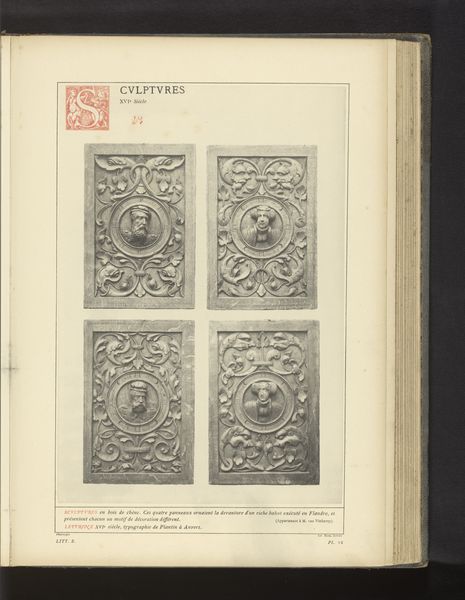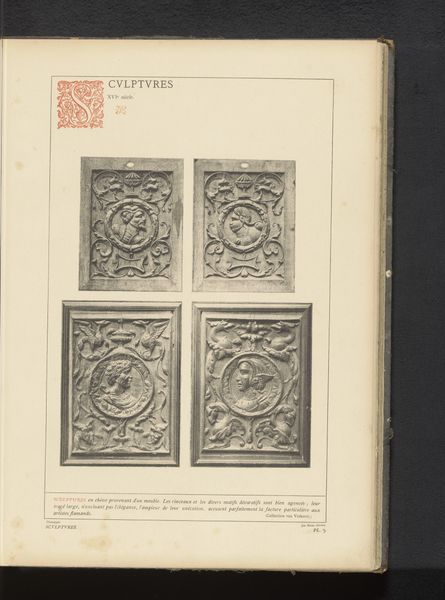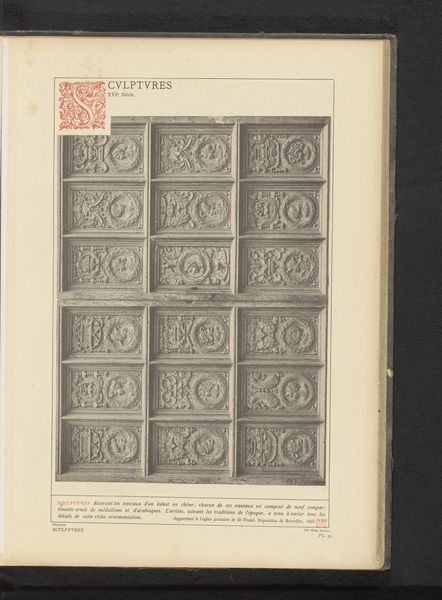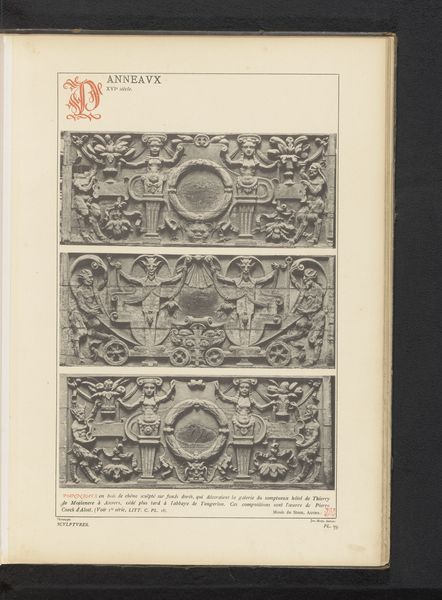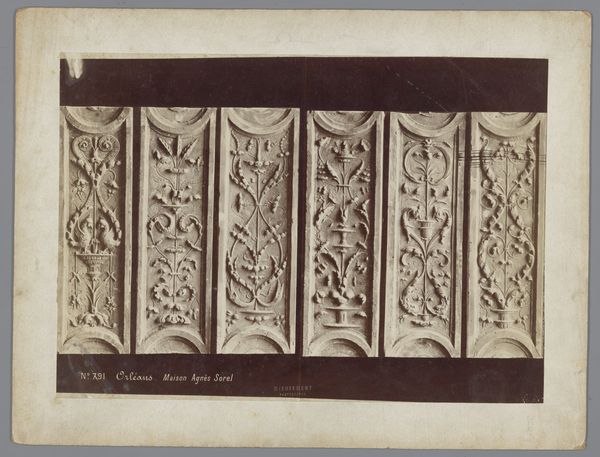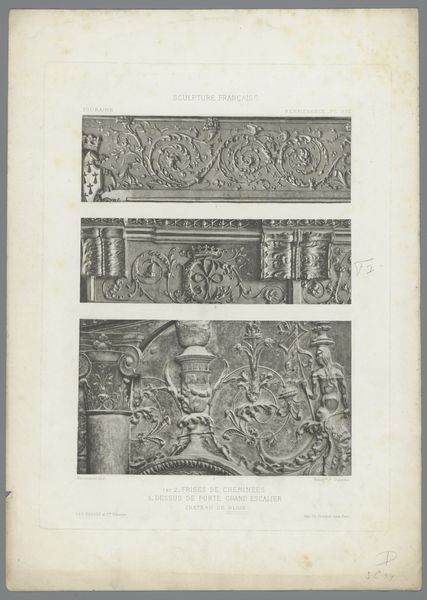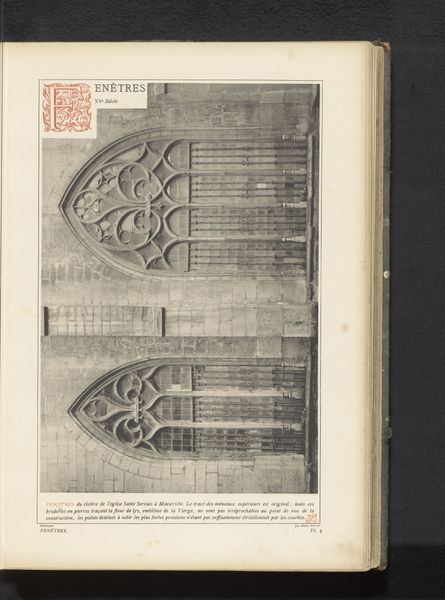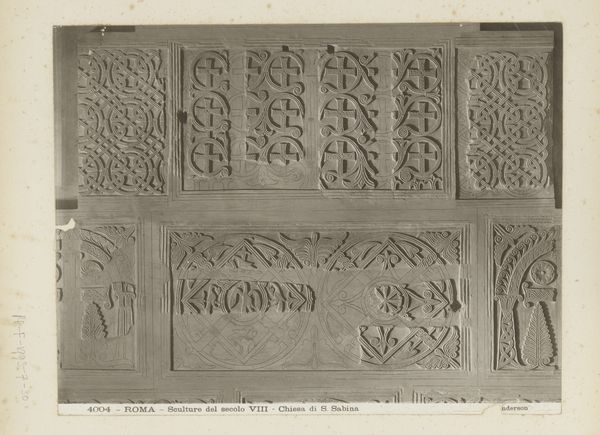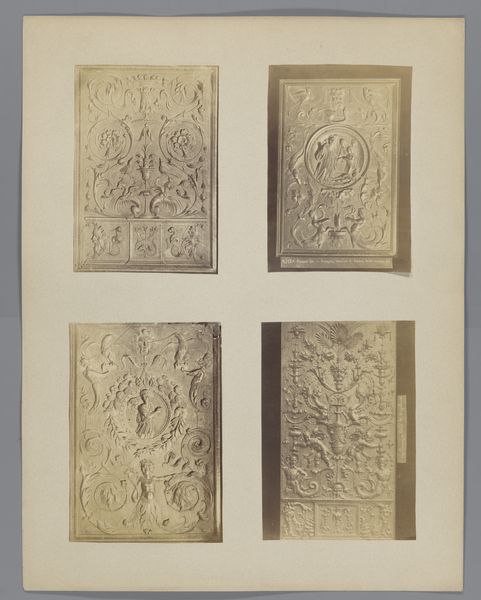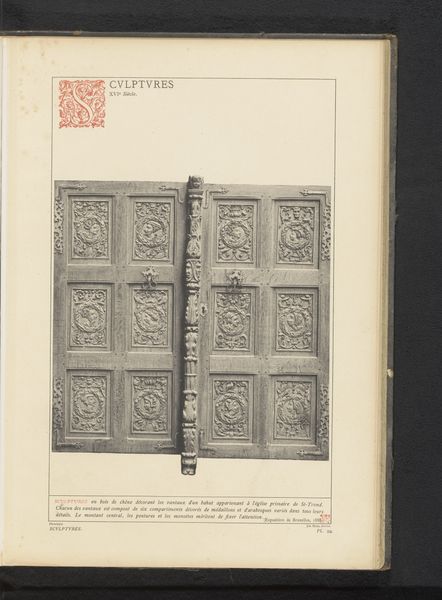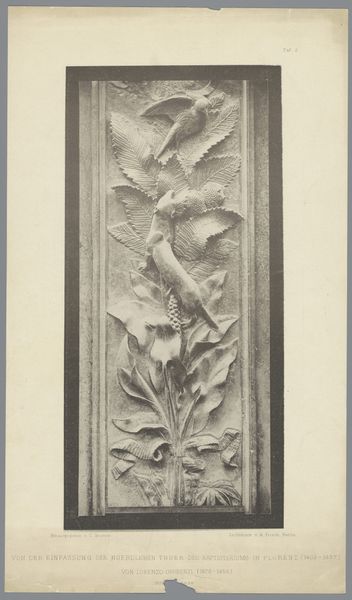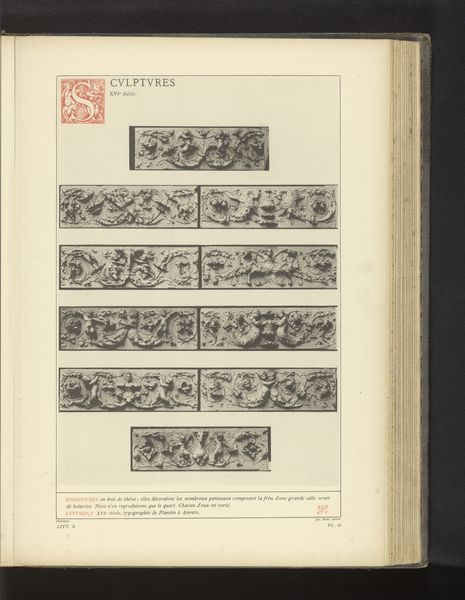
drawing, carving, print, relief, sculpture, wood
#
drawing
#
carving
# print
#
relief
#
landscape
#
form
#
11_renaissance
#
sculpture
#
line
#
wood
#
northern-renaissance
#
decorative-art
Dimensions: height 341 mm, width 233 mm
Copyright: Rijks Museum: Open Domain
Editor: Okay, so we're looking at an image of what's described as "Eikenhouten panelen, gedecoreerd met bloem- en plantmotieven," or oak panels decorated with floral and plant motifs, created before 1889. They seem to be relief carvings. What immediately strikes me is their rigid formality, yet with a wild abandon in the detail. What do you see in this piece, from a historical perspective? Curator: These panels are fascinating because they reveal how decorative arts operated within a specific social and political context. The Northern Renaissance, the likely period given the style, saw a rise in merchant wealth and the growth of cities. Such panels adorned homes and public spaces, visually signaling status and conveying moral messages through the symbolic language of flowers and plants. Editor: Moral messages? How so? Curator: Think about the types of flowers chosen. Were they native plants, suggesting a connection to the local landscape and a sense of rootedness? Or were they exotic blooms, representing wealth and worldly knowledge acquired through trade and colonial expansion? These choices weren't merely aesthetic; they broadcasted a very clear societal position. Editor: So the panels weren't just pretty decorations. They actively participated in a conversation about status and belonging? Curator: Precisely. Furthermore, who had access to such decorations? Was it limited to a wealthy elite, or did a broader segment of society engage with these kinds of visual statements? Thinking about that gives you insights into how cultural values are disseminated and enforced within a community. Editor: I never would have considered their impact on the average citizen back then, that’s a great angle. Thanks! Curator: Of course. Considering the original settings in which these panels existed allows us to unpack their active role in shaping cultural norms and expectations. That's how art becomes a historical document.
Comments
No comments
Be the first to comment and join the conversation on the ultimate creative platform.

